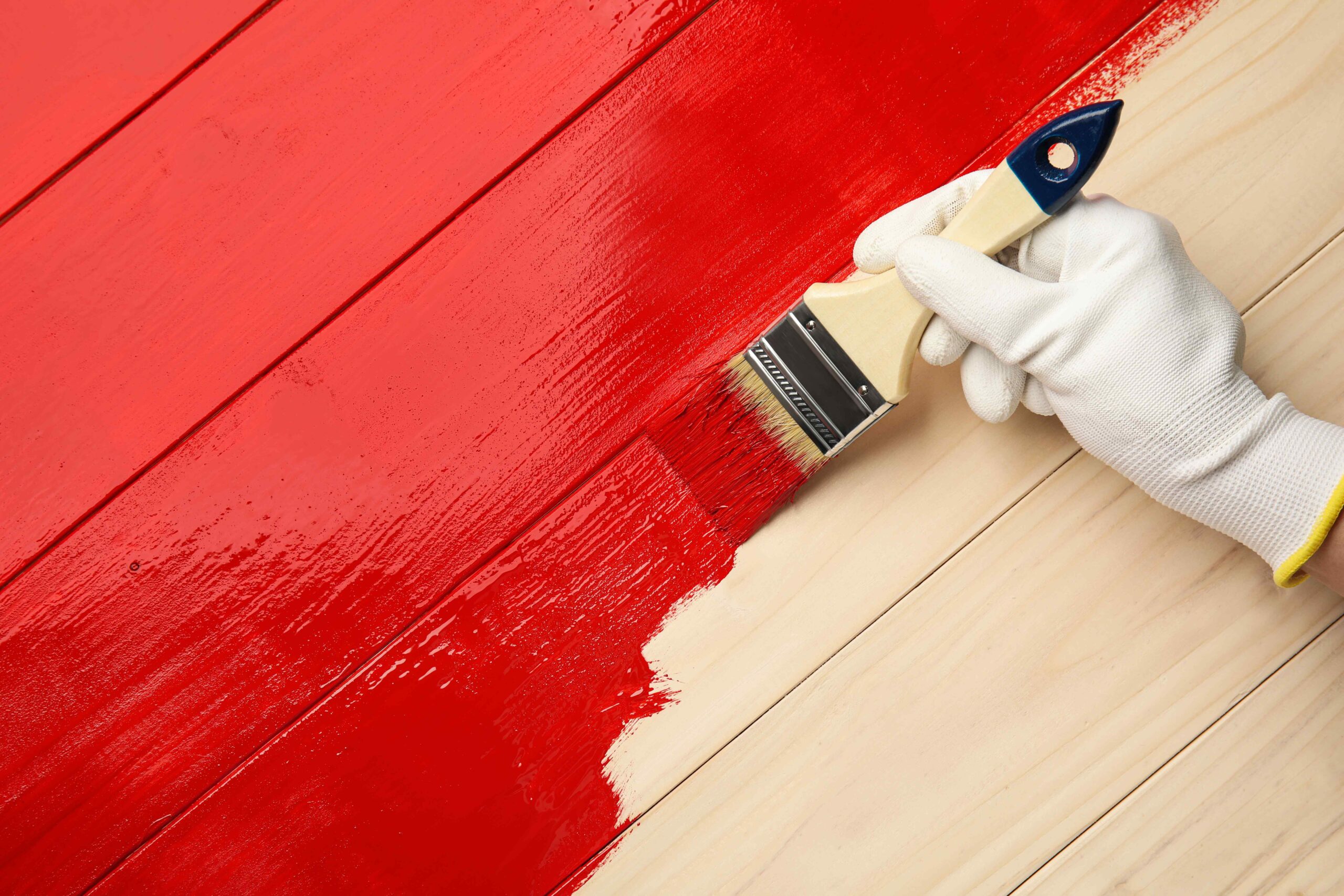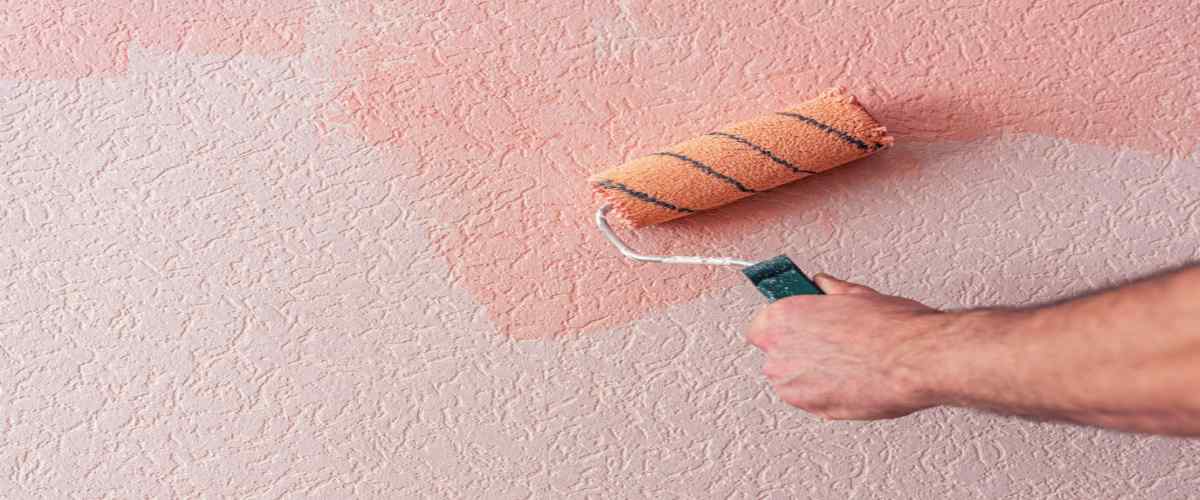Acrylic paint for walls stands out for its versatility and durability, making it a preferred choice for professionals and DIY enthusiasts. The range of vibrant colours allows for endless creative possibilities, turning plain walls into stunning displays of artistry. In this blog, we’ll be diving deep into the types, uses, advantages and disadvantages of acrylic paints for walls.

Things we covered for you
What are Acrylic Paints?
Acrylic paints, distinguished by their rapid drying characteristics, are a type of water-based paint that comprises pigments suspended in an acrylic polymer emulsion. Renowned for their adaptability, these paints offer the flexibility to be applied thickly for a textured finish or thinned with water to achieve a delicate wash effect.
Their versatility extends to replicating the visual aesthetics of both oil and watercolour paints, rendering them particularly popular for various wall painting endeavours. Additionally, acrylic paints are favoured for their durability and resistance to fading over time, making them a reliable choice for artistic and decorative applications.
Acrylic Paint – Varieties and Characteristics

Acrylic paints come in various types, each possessing distinct properties tailored to specific artistic applications. Exploring these different varieties adds a dynamic dimension to the creative process.
Heavy Body Acrylics
- Characteristics: Thick consistency, retains brush strokes.
- Ideal Use: Well-suited for textured wall art, providing depth and tactile appeal.
Fluid Acrylics
- Characteristics: Smooth consistency, excellent for detailed work.
- Ideal Use: Perfect for intricate art projects or achieving watercolour-style effects.
Interactive Acrylics
- Characteristics: Extended drying time, facilitating blending.
- Ideal Use: Particularly useful for creating murals or intricate colour transitions on walls.
| Acrylic Paint Type | Consistency | Brush Stroke Retention | Drying Time | Ideal Use |
| Heavy Body Acrylics | Thick | Yes | Fast | Textured wall art |
| Fluid Acrylics | Smooth | No | Fast | Detailed work, watercolour-style painting |
| Interactive Acrylics | Varies (adjustable) | Yes | Extended | Murals, complex colour transitions on walls |
Acrylic Paint – Distinctive Features
Acrylic paints boast a plethora of distinctive features that contribute to their widespread acclaim in the artistic realm.
Read: Asian Paints Primer Price 1 Liter
- Texture Variability: Ranging from fluid to heavy-bodied, acrylic paints offer artists the flexibility to choose the texture that aligns with their creative vision. This adaptability caters to a diverse range of artistic applications.
- Rapid Drying: One of the hallmark features of acrylic paints is their quick drying time. This characteristic minimizes the waiting period between layers, enabling artists to work efficiently and build up intricate details without extended pauses.
- Colour Retention: Acrylic paints maintain the richness and vibrancy of their colours even after drying. This enduring quality ensures that artworks retain their visual impact over time, making acrylics a reliable choice for a variety of wall painting projects.
- Versatility in Wall Painting: From bold, graphic designs to more nuanced, layered artworks, acrylic paints offer versatility in wall painting applications. Their adaptability allows artists to explore a wide spectrum of styles and visual expressions.
- Compatibility with Mixed Media: Acrylic paints seamlessly integrate with various mixed media, expanding the possibilities for artistic experimentation. This compatibility encourages artists to combine acrylics with other materials, adding depth and complexity to their creations.
- Durability: Known for their resilience, acrylic paints contribute to the longevity of artworks. Their durable nature ensures that finished pieces maintain their quality and visual appeal, standing the test of time.
Where and How Can Acrylic Paints Be Used?
The versatility of acrylic paints extends to a myriad of wall painting projects, showcasing their adaptability and suitability for various creative endeavours.
Read: Asian Paints Interior Colour Combination Catalogue
- Decorative Murals: Acrylic paints are particularly well-suited for crafting vibrant and expressive decorative murals. Artists can unleash their creativity, incorporating bold colours and intricate details to transform walls into captivating visual narratives.
- Texture Enhancement: Adding texture to walls becomes a seamless task with acrylic paints. Their ability to be applied in thick layers allows artists to create tactile and visually interesting surfaces, contributing to a dynamic and engaging environment.
- Room Revitalization: Acrylic paints offer a quick and effective way to give a room a fresh and vibrant makeover. The fast-drying nature of acrylics enables swift transformations, allowing individuals to infuse new life and energy into their living spaces with minimal downtime.
- Versatile Surface Adherence: One of the remarkable features of acrylic paints is their compatibility with various surfaces. Whether it’s drywall, plaster, or even concrete, acrylics adhere effectively, providing artists the freedom to explore diverse canvases for their wall painting projects.
- Restoration and Concealing Imperfections: Acrylic paints serve as a practical solution for restoring and concealing imperfections on walls. Their versatility enables the covering of blemishes and the creation of a visually appealing finish, revitalizing the overall aesthetic of a space.
Applying Acrylic Paint to Walls – A Step-by-Step Guide
Achieving a stunning acrylic paint finish on walls involves a systematic process. Follow these steps for a successful and visually appealing application:
Step 1: Surface Preparation
Ensure the wall surface is clean, dry, and free of any debris or dust. If necessary, apply a primer to promote paint adhesion and enhance the durability of the finish.
Step 2: Gather Your Materials
Collect the necessary materials, including acrylic paint in the desired colours, different brushes for various textures, paint trays, and a sealant for finishing.
Step 3: Base Coat Application
Start by applying a base coat of acrylic paint evenly across the wall. Use a high-quality paintbrush or a roller for larger surfaces. This base coat provides a foundation for the subsequent layers and ensures a smooth, uniform finish.
Read: Painting Services in Electronic City, Bangalore
Step 4: Experiment with Brushes and Tools
Explore different brushes and tools to create textures and effects according to your artistic vision. Experiment with stippling, sponging, or other techniques to add depth and interest to the painted surface.
Step 5: Layering for Depth
Allow each layer to dry thoroughly before applying the next one. Layering not only adds depth to the artwork but also allows for the gradual building of colours and textures. Patience in this step contributes to the overall quality of the final result.
Step 6: Precision and Detailing
Use smaller brushes for precision and detailing work. This is the stage where intricate designs or fine details can be added to enhance the visual appeal of the painted surface.
Step 7: Final Sealant Application
Once satisfied with the layers and details, finish the project by applying a sealant. The sealant not only protects the painted surface but also enhances durability, ensuring the longevity of your artwork.
Additional Tips
- Work in well-ventilated areas to allow for proper drying and to minimize fumes.
- If you’re working on a larger project, consider breaking it down into manageable sections to maintain consistency throughout the application process.
- Experiment with colour combinations and techniques on a small test surface before tackling the entire wall.
Acrylic Paint – Advantages
| Advantages | Details |
| Long-lasting Finish | Ensures wall art remains vibrant and resists fading over time, contributing to the longevity of the artwork. |
| Wide Range of Colors | Offers an extensive palette, providing unlimited creative possibilities for interior design and artistic expression. |
| Ease of Maintenance | Requires minimal upkeep, often just a damp cloth for cleaning, making it a practical choice for maintaining the appearance of painted surfaces. |
Acrylic Paint – Disadvantages
| Disadvantages | Details |
| Cost Considerations | High-quality acrylic paint may come with a higher price tag compared to other paint types, impacting overall project costs. |
| Fast-drying Nature | While advantageous for efficiency, the quick drying time can pose challenges for extensive or intricate wall painting projects, requiring swift execution. |
| Environmental Considerations | Issues related to the disposal of acrylic paint and cleaning of tools, require attention to environmentally responsible practices. |
How can NoBroker help
NoBroker Painting Services offers expert guidance in selecting and applying acrylic paints for walls. With a comprehensive understanding of the latest trends and techniques in wall painting, NoBroker can provide tailored advice, connect you with our professional painters, and offer insights into the best products for your specific needs, ensuring a seamless painting experience for your space.
Read: Weather Shield Paint Price per Litre in India 2024
Frequently Asked Questions
Yes, acrylic paint is well-suited forwall painting due to its durability and colour stability.
The best acrylic paints for walls offer high pigment density, durability, and ease of application.
The price of acrylic paint for walls varies, but it generally offers good value for its quality and longevity.
Acrylic paint can be used on exterior walls, as it is resistant to weathering and fading.
Creative ideas include murals, textured finishes, and mixing colours to create unique shades and patterns.














